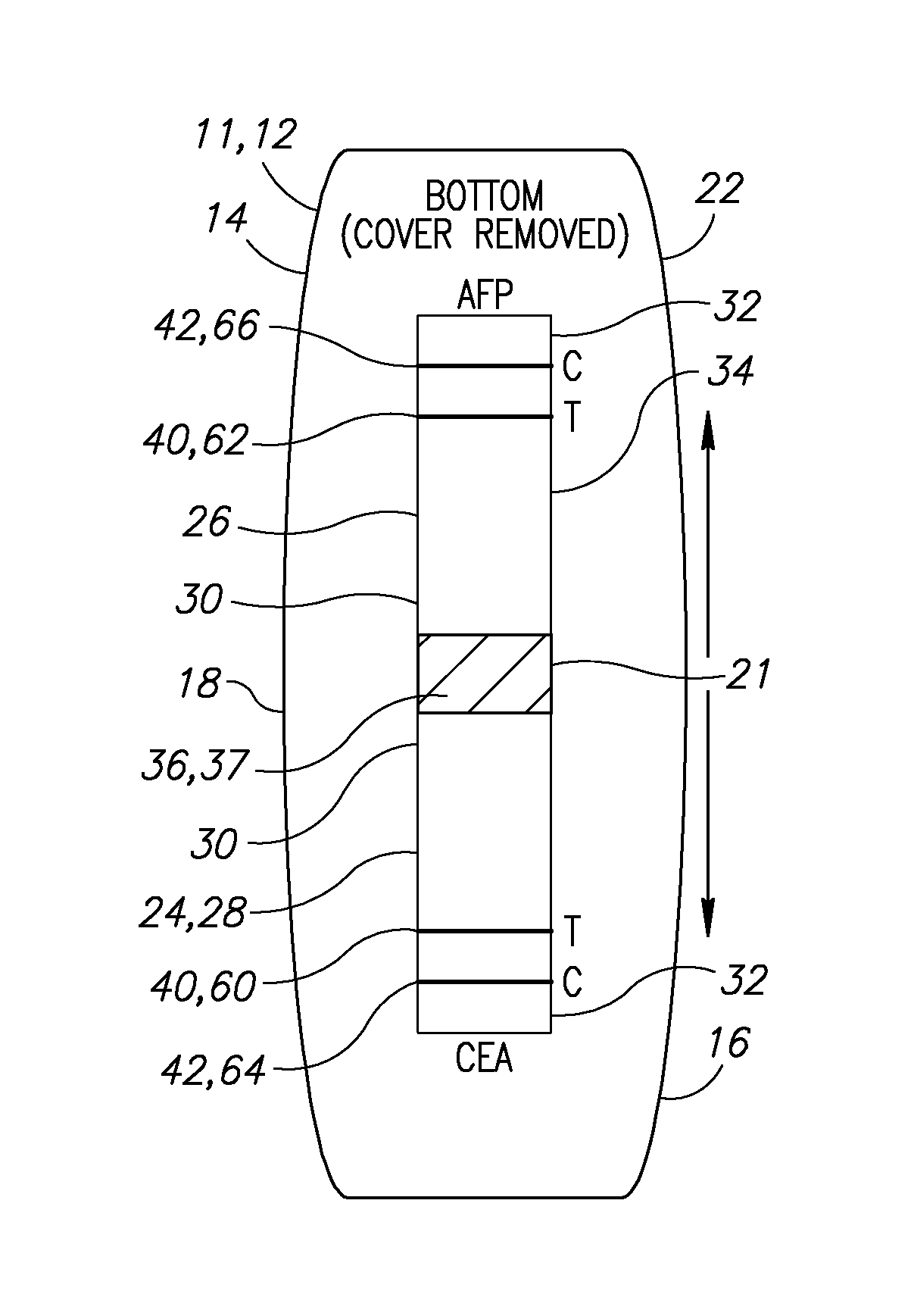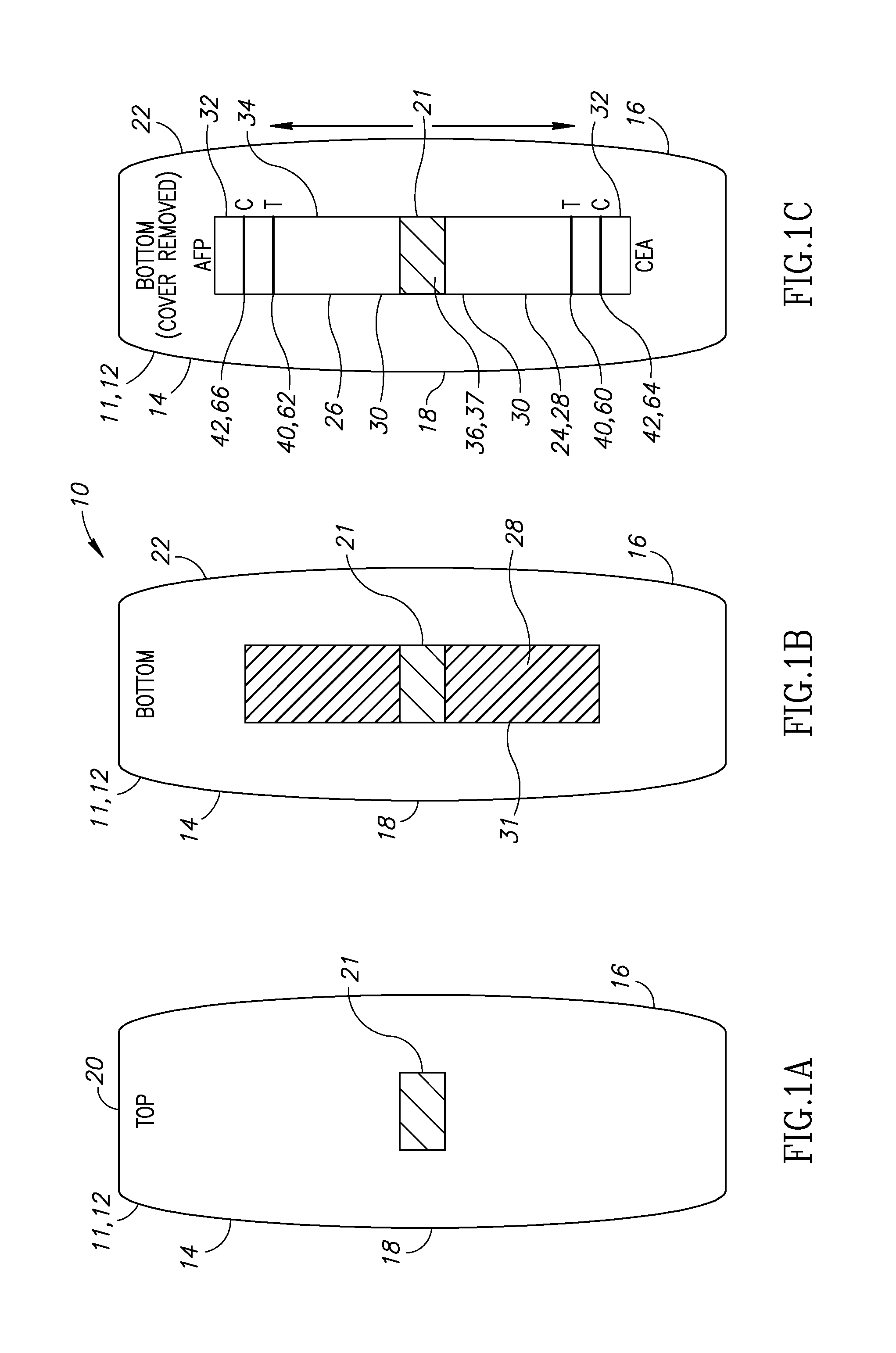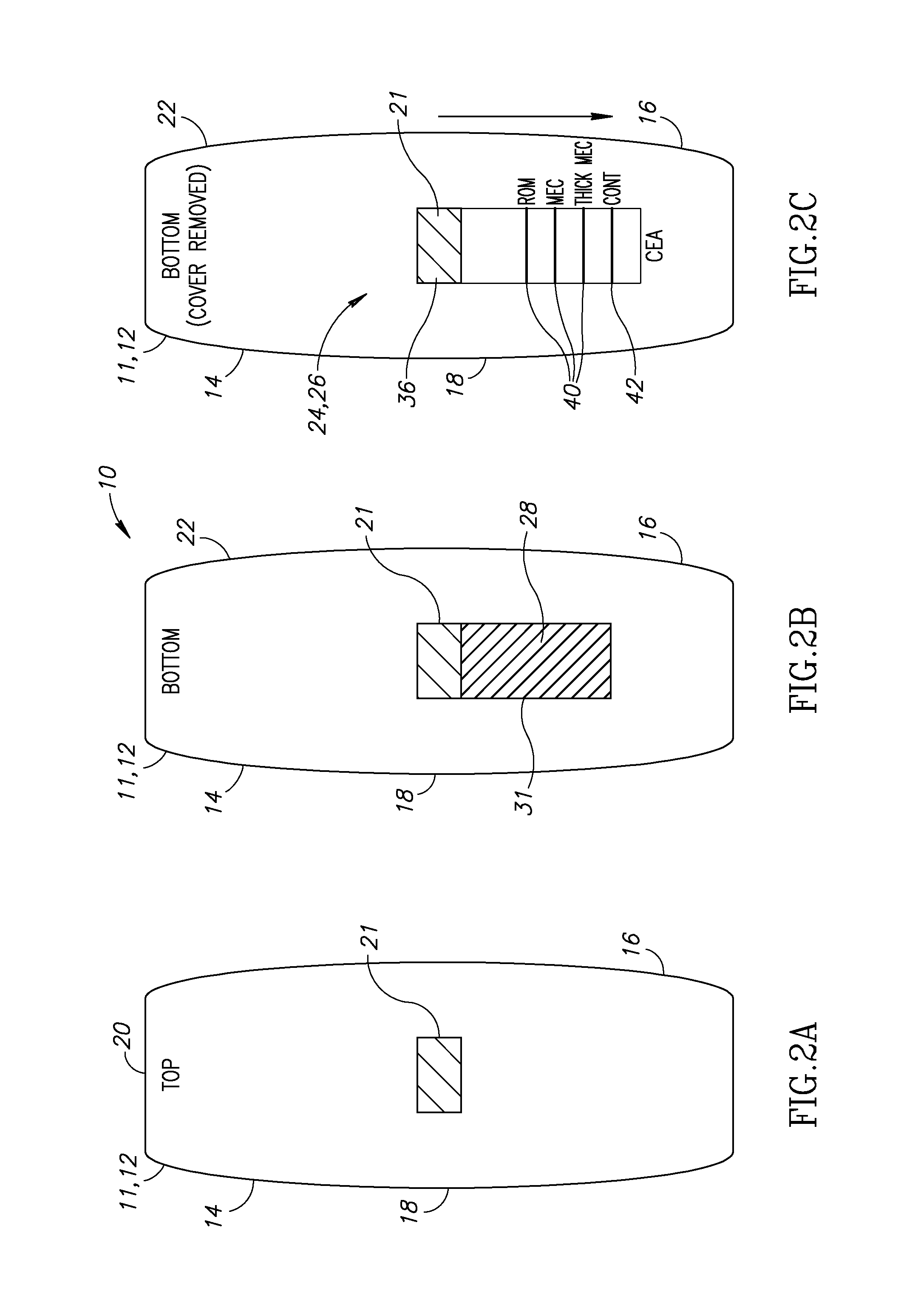Noninvasive detection of meconium in amniotic fluid
a technology of amniotic fluid and meconium, which is applied in the field of noninvasive detection of meconium in amniotic fluid, can solve the problems of obstructing airways, meconium aspiration syndrome (mas), and 1000 children's deaths, and achieve the effect of saving critical time and high amniotic fluid sugar level
- Summary
- Abstract
- Description
- Claims
- Application Information
AI Technical Summary
Benefits of technology
Problems solved by technology
Method used
Image
Examples
example 1
[0060]After obtaining informed consent, amniotic fluid specimens were collected from women in labor following rupture of membranes. Urine specimens were collected through a urethral catheter from time to time during and after labor.
[0061]Phase I of this experiment was performed in order to determine whether detectable levels of CEA and / or AFP may be found and whether these levels may have diagnostic value. Phase I was performed as follows: Amniotic fluid specimens were examined by medical personnel and were classified as clear amniotic fluid or meconium stained amniotic fluid (MSAF). Samples of clear amniotic fluid and samples of MSAF were then sent for quantitative measurement of CEA and AFP concentrations by ABBOTT AxSYM (a Microparticle Enzyme Immunoassay, ABBOTT Laboratories, Ill., USA).
[0062]Table 2 shows results of the quantitative measurements of CEA and AFP.
[0063]
TABLE 2CEAAFPSAMPLE TYPEng / mLng / mL1Clear AF91140.752Clear AF145.6196.693Clear AF118.3291.124Clear AF209.3150.515C...
example 2
Amniotic Fluid and MSAF Detection
[0097]A commercial kit for detecting bile acid was purchased from Diazyme Laboratories (Poway, Calif., USA). Deoxycholic acid (DOC, a bile salt) was purchased from Sigma-Aldrich (St. Louis, Mo., USA). Accurate implementation of the procedure described by the Diazyme kit manual showed that the presence of DOC can be easily detected by the naked eye. DOC was applied to the solution containing the reconstituted kit reagents at room temperature. The original solution color is yellow. The presence of DOC initiated a two-stage reaction that led to a color change to dark red / brown after ten minutes. The presence of low DOC concentrations could be easily detected by the naked eye. Controls containing distilled water did not lead to any color change. Solutions maintained a stable color for approximately one hour. Meconium bile acids can be detected by the color change. A pH sensitive pad for the detection of amniotic fluid (Common-Sense Inc., Caesarea, Israel...
example 3
A Platform for Identifying Etiologies of Fetal Distress after ROM Occurs
[0098]High amniotic glucose level can be a result of uncontrolled gestational diabetes, which is a possible etiology for fetal distress. A colorimetric assay for glucose can be done by coupling the activities of the two enzymes: glucose oxidase and glucose peroxidase. In the first step, glucose oxidase catalyzes the reaction: glucose+oxygen→gluconolactone+hydrogen peroxide. In the second step, the hydrogen peroxide is used by the peroxidase to convert a chemical substrate (called a chromogen) from an uncolored form to a colored one. This reaction is used in commercial urinalysis kits. For example: the enzymes and the chromogen can be attached to the stick. When glucose is present, the reactions described above take place, and the stick changes color. In cases of early preterm premature rapture of membranes (PPROM; <32nd gestational week), the chances of placental abruption are as high as 10-15%. Benign abruption...
PUM
| Property | Measurement | Unit |
|---|---|---|
| air humidity | aaaaa | aaaaa |
| acid-base | aaaaa | aaaaa |
| threshold | aaaaa | aaaaa |
Abstract
Description
Claims
Application Information
 Login to View More
Login to View More - R&D
- Intellectual Property
- Life Sciences
- Materials
- Tech Scout
- Unparalleled Data Quality
- Higher Quality Content
- 60% Fewer Hallucinations
Browse by: Latest US Patents, China's latest patents, Technical Efficacy Thesaurus, Application Domain, Technology Topic, Popular Technical Reports.
© 2025 PatSnap. All rights reserved.Legal|Privacy policy|Modern Slavery Act Transparency Statement|Sitemap|About US| Contact US: help@patsnap.com



